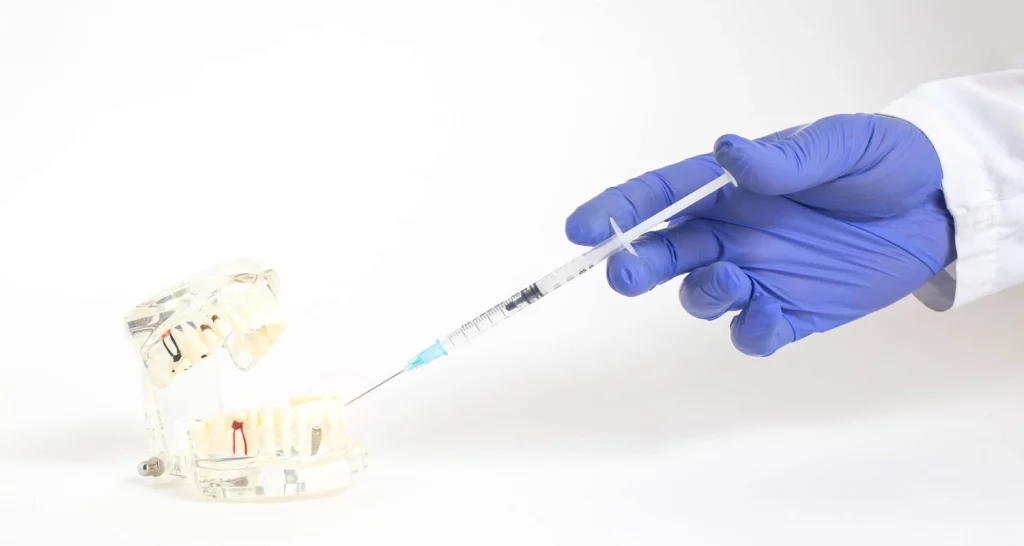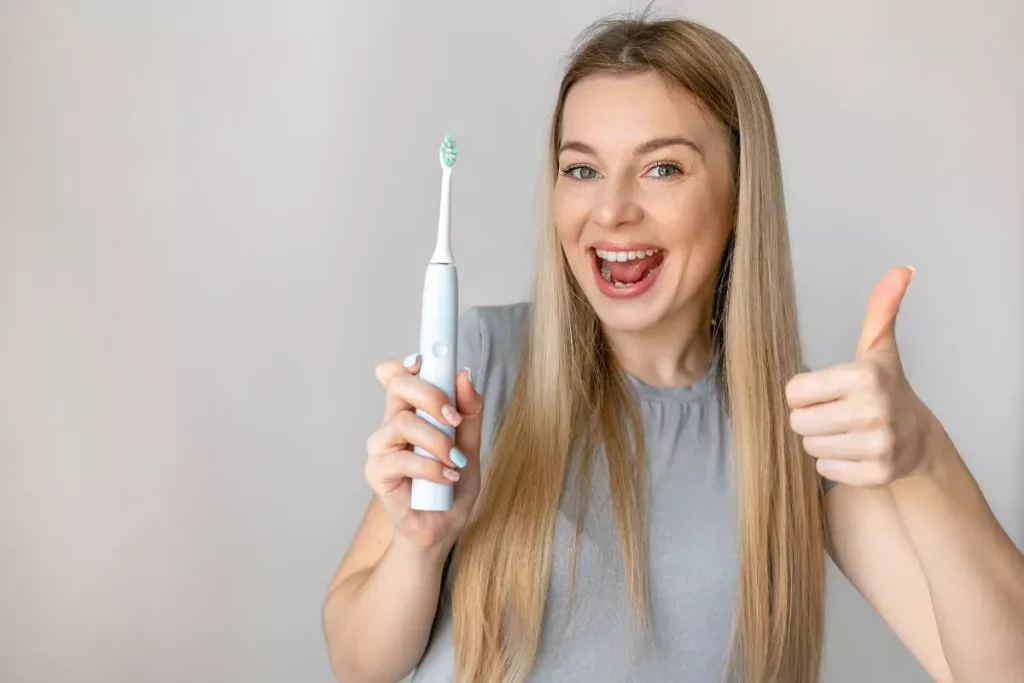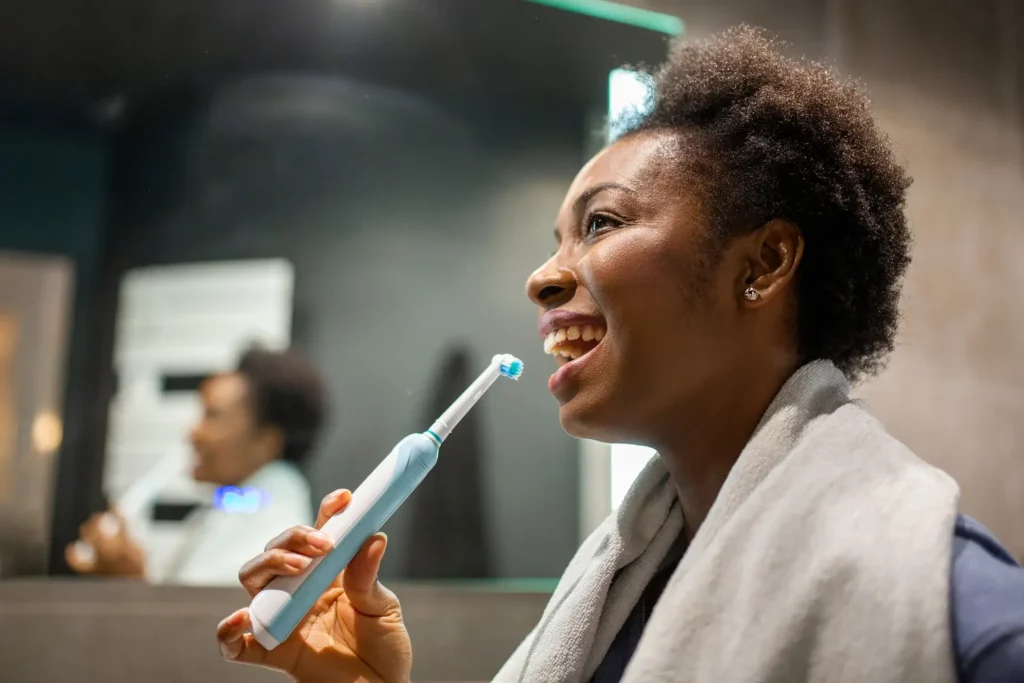Sedation in dentistry was first used in 1844 by the American dentist Horace Wells, who discovered the anesthetic effect of nitrous oxide, also known as “laughing gas”, and administered it to perform a dental extraction.
Aversion and even fear in the face of a dental process have accompanied humanity for years, but a solution was found with sedation in dentistry.
Currently, sedation dentistry is used for different treatments. promoting calm and reducing anxiety levels, they facilitate dental interventions. In other words, it is a relevant therapeutic alternative for those who manifest odontophobia.
Extractions, root canals, and implant placements are procedures in which sedation is regularly used, although it may be appropriate for any dental intervention.
Are Anesthesia and Sedation the Same?
It is often assumed that anesthesia and sedation are two terms for the same procedure, but they are two different techniques.
1. Anesthesia eliminates sensitivity and leads to a state of total unconsciousness and numbness. There are two levels:
• General anesthesia is administered for complex surgical interventions and in some dental interventions.
• Local anesthesia, which eliminates sensitivity in a certain sector of the body. This one is frequently used in dental procedures.
2. Sedation calms and facilitates the management of the person’s mood, generating changes in the level of consciousness, from slight drowsiness to a deeper level, in which there is no reaction to strong or painful stimuli.
They are complementary techniques. That is, the dentist can initially administer a medication to calm the patient down, reduce his level of anxiety, and then apply the dose of local anesthesia required for the procedure.
What are the Advantages of Sedation in Dentistry?
Fears generate anguish and stress, making it increasingly common for oral health professionals to resort to sedation to facilitate dental treatments. The benefits of sedation vary. It facilitates the work of the dentist while allowing the patient to receive the treatment he requires, under better conditions and a favorable prognosis.
Sedation facilitates the tranquility and comfort of the person during the dental intervention, which has a direct impact on the success of the procedure and the subsequent results for the person’s oral health.
From the dentist’s perspective, the required procedure can be performed, avoiding the inconvenience related to the fearful emotional condition of the patient. In short, it increases the possibilities of patient cooperation.
Who is a Suitable Candidate for Dental Sedation?
Aversion to dental procedures is common. People who regularly require help to facilitate their dental treatments present some of the following situations:
• Anxiety or fear when visiting the dentist
• Difficulty controlling movements
• Less sensitive to local anesthesia
• Fear of needles (aichmophobia)
• Gagging reflex, as a consequence of high sensitivity in the mouth
• Special requirements due to physical, cognitive, or behavioral conditions
However, a large number of people do not fit into this list but prefer sedation for dental processes for comfort.
Types of Dental Sedation
There are different sedation options available to facilitate dental treatments for those visiting the dentist and who find that it is not a pleasant experience.
The sedation alternative is determined according to the dental condition and needs of the patient. The level of anxiety, the time required for the dental procedure, and the person’s medical history are some of the factors that influence this decision.
These are the most frequent types of sedation:
1. Minimal inhaled sedation: nitrous oxide (laughing gas) inhalation sucked through a mask. The calming effects are registered in the following five minutes. The dentist controls the dose administered and adjusts it during the procedure. In the end, pure oxygen is supplied to remove the nitrous oxide from the body.
2. Oral sedation: the level can go from minimal to moderate. Generally, it is administered through a pill taken one hour before the dental procedure. It produces drowsiness, even though the person is awake. If a higher dose is administered, it is considered as moderate sedation.
If this is the sedation option chosen for the dental treatment, it is suggested that the patient be accompanied, since side effects on motor skills can be expected.
3. Intravenous (IV) sedation: this is the deepest form of sedation. The medication is received intravenously and takes effect in less time. It facilitates the control of the nervous and motor systems. In addition, it allows the dentist to adjust the level during the intervention and use even reversal medications.
Note: Heart rate, blood pressure, and oxygen levels must be monitored during the intervention.
4. Deep sedation and general anesthesia: Medications can cause unconsciousness, that is, the person falls asleep and needs time to wake up.
General anesthesia is the alternative to treat young children and adults with special needs. This type of unconscious sedation requires training and experience on the part of the health professional. In such cases, the dentist usually works with an anesthesiologist.
Preparation Before Sedation
In the consultation prior to the dental intervention, the professional informs the patient about the sedation alternatives. Their medical history including medications for ongoing conditions is also discussed.
After gathering this vital information, sedation recommendations can be made.
Steps are required before sedation for a dentistry procedure:
• Review the patient’s medical history to determine if sedation is appropriate.
• Inform the dentist about medications being taken.
• The dentist will provide instructions on fasting prior to sedation.
• Fill out an informed consent form, a document that mentions possible risks.
• The dose should be in accordance with the age and health condition of the patient.
• Monitor vital signs during the intervention, in accordance with the guidelines of the American Dental Association.
If you are taking an anticoagulant, it is necessary to inform the dentist.
Aftercare
It is recommended to attend the dental consultation in the company of another person, who can assist you if the need arises. The sedation effect wears off approximately two hours after the end of the procedure. During this time, it is normal to feel drowsy or have decreased reflexes.
Risks and Side Effects
A the end of dental treatment, you may experience:
• Drowsiness
• Dry mouth (xerostomia)
• Headache
• Fever and snoring in children
• Nausea and vomiting
• Hypoxia/apnea, due to the lack of oxygen in the cells and difficulty breathing
• Bruises, if the sedation was intravenous
Determining the side effects of sedatives can be complex and rarely cause an allergic reaction.
Use in Children and Pregnant Women
Sedation is generally safe in children; however, some parents may not feel comfortable giving these substances to their children. Side effects can appear such as:
• Irritability
• Snoring or different sounds
• Fever
• Nausea and vomiting
Some children take more time to wake up so the effect of the sedative is prolonged. If it occurs, the child must remain under observation. Some side effects are possible but go away in a day or two
Sedation dentistry is not recommended for pregnant women because some sedative medications can affect the normal development of the baby. Only in exceptional cases is it possible to consider the use of nitrous oxide, during the second trimester of pregnancy. As a general rule, dentists prefer to use sedation, even after pregnancy.
Against Odontophobia, the Remedy is Sedation
For those who fear the dentist, a condition called odontophobia, sedation procedures are an alternative to avoid major effects on oral health.
Anxiety, fear, and other reactions that may occur during dental interventions can be controlled through sedation. I the required dental procedure for the benefit of the person’s oral health, optimizing intervention time.
Frequently Asked Questions
What type of sedation is used in dentistry?
For oral conscious sedation, your dentist will provide you with sedative medication, typically in pill form, about an hour before your procedure starts. The most commonly used sedative is triazolam, which belongs to the diazepam family. However, your dentist may also use other medications such as zaleplon or lorazepam.
Are you fully asleep during sedation dentistry?
IV sedation is often called “sleep dentistry” for a reason. With IV sedation, you are fully asleep throughout the procedure, experiencing no pain or awareness of what is happening.
What occurs during dental sedation?
During IV sedation, a very thin plastic tube is inserted into a vein in either your arm or the back of your hand. A drug is then administered through the tube, quickly making you feel very sleepy and relaxed.
Do you feel pain with dental sedation?
With oral sedation dentistry, there is no need to experience any pain. Patients can remain completely comfortable throughout the entire treatment.
Is sedation dentistry beneficial?
Sedation dentistry is effective for managing dental anxiety, fear, or phobia. The medications and techniques used help reduce stress and pain during dental procedures, ensuring you receive the necessary and deserved high-quality care. It’s particularly useful for patients who experience dental anxiety or fear.
Share:
References
1. Agarwal Rita (May 28, 2019) Anesthesia or sedation for your child’s dental treatment? /https://www.healthychildren.org/Spanish/healthy-living/oral-health/Paginas/Anesthesia-or-Sedation-for-Your-Childs-Dental-Work.aspx
2. Cleveland Clinic (Enero 12 de 2022) Sedation Dentistry / https://my.clevelandclinic.org/health/treatments/22275-sedation-dentistry
3. Fiorillo Luca (December de 2019) Conscious Sedation in Dentistry /https://pubmed.ncbi.nlm.nih.gov/31817931/
4. Guerrero Ortiz F, Sanchis Fores C, Onrubia Fuertes X, Aspiazu Hinostroza K (December 2020) Conscious, inhalational, and pharmacological sedation, its effectiveness in redirecting the behavior of pediatric patients in the dental office: an observational cross-sectional study – Magazine Advances in Odontostomatology Vol. 36 No. 4 / https://scielo.isciii.es/scielo.php?script=sci_arttext&pid=S0213-12852020000400002
5. Kapur Arpita, Kapur Viany (December 2018) Conscious Sedation in Dentistry /https://www.ncbi.nlm.nih.gov/pmc/articles/PMC6327823/
6. Ortega Carolina, Diaz Omar, Molano Alberto, Barrientos Silvia (s.f) Sedoanalgesia in dental treatments: a descriptive study / https://repository.javeriana.edu.co/bitstream/handle/10554/46143/SEDOANALGESIA%20EN%20TRATAMIENTOS%20ODONTOL%C3%93GICOS-%20UN%20ESTUDIO%20DESCRIPTIVO.pdf?sequence=2&isAllowed=y
6. Salazar Alejandro (1999) General anesthesia and sedation in dentistry / https://www.actaodontologica.com/ediciones/1999/2/art-13/
7. Watson Stephanie (Enero 24 de 2022) Sedation Dentistry: Can You Really Relax in the Dentist’s Chair? / https://www.webmd.com/oral-health/sedation-dentistry-can-you-really-relax-in-the-dentists-chair
-
Nayibe Cubillos M. [Author]
Pharmaceutical Chemestry |Pharmaceutical Process Management | Pharmaceutical Care | Pharmaceutical Services Audit | Pharmaceutical Services Process Consulting | Content Project Manager | SEO Knowledge | Content Writer | Leadership | Scrum Master
View all posts
A healthcare writer with a solid background in pharmaceutical chemistry and a thorough understanding of Colombian regulatory processes and comprehensive sector management, she has significant experience coordinating and leading multidisciplina...



















